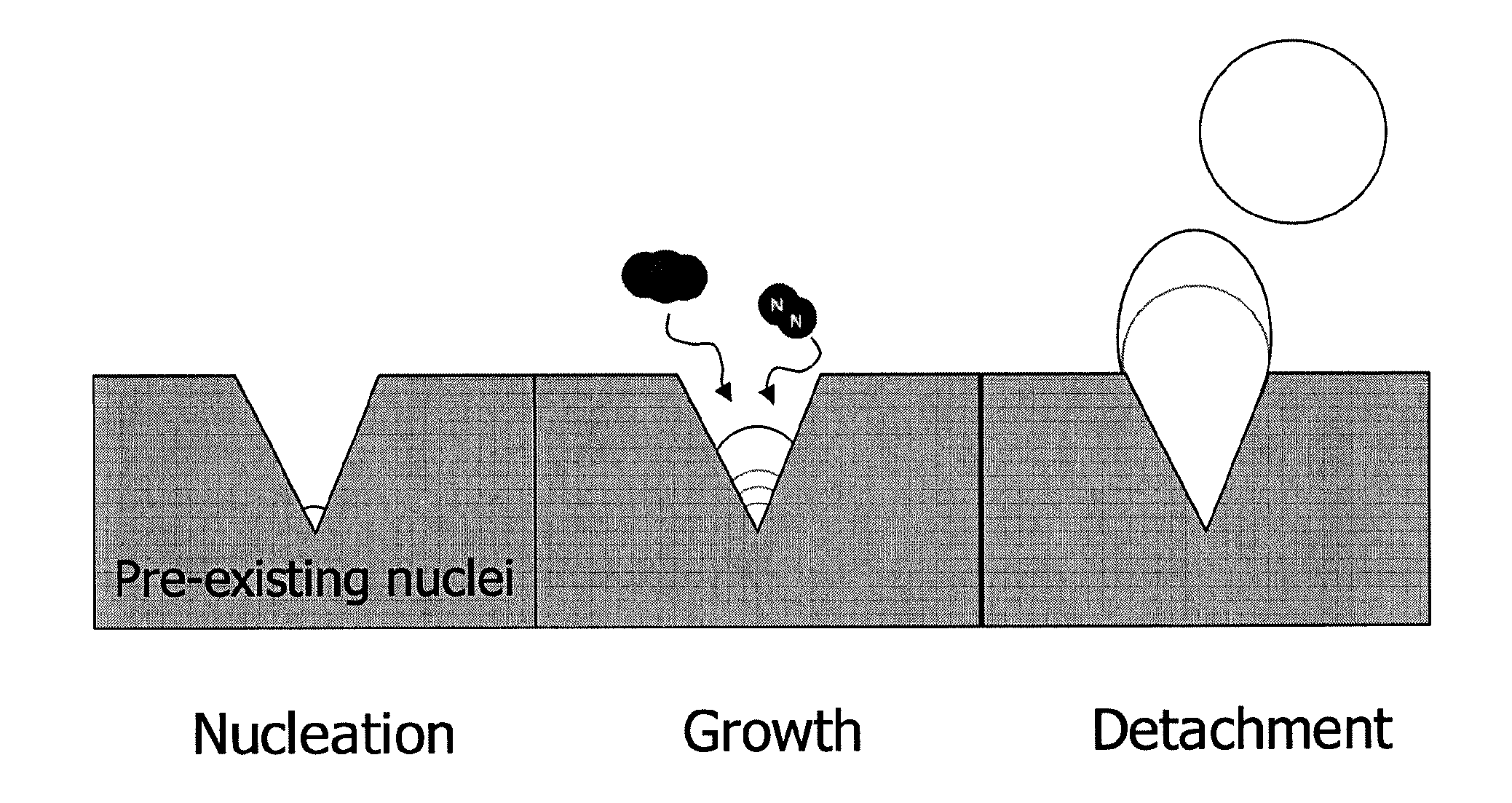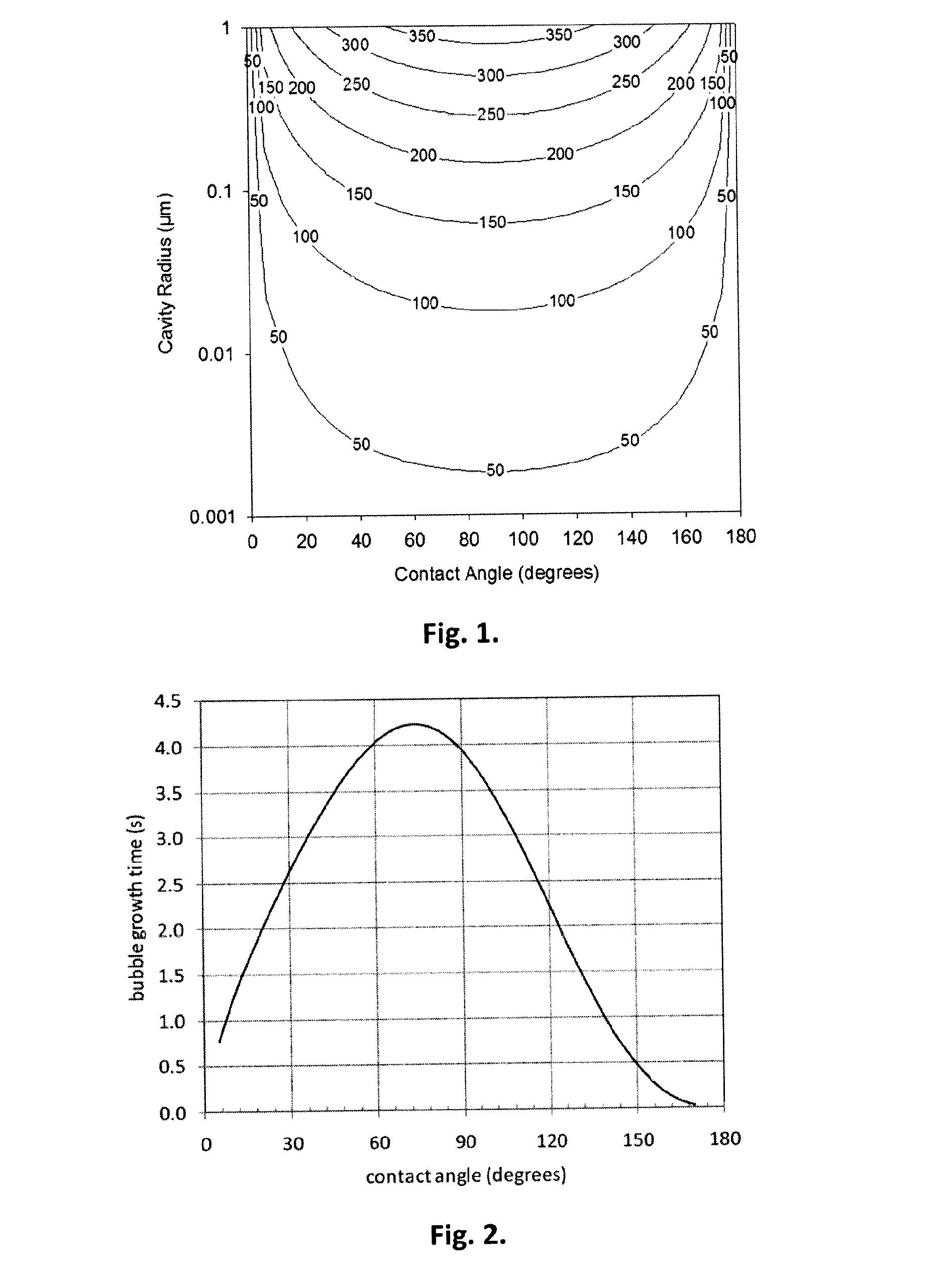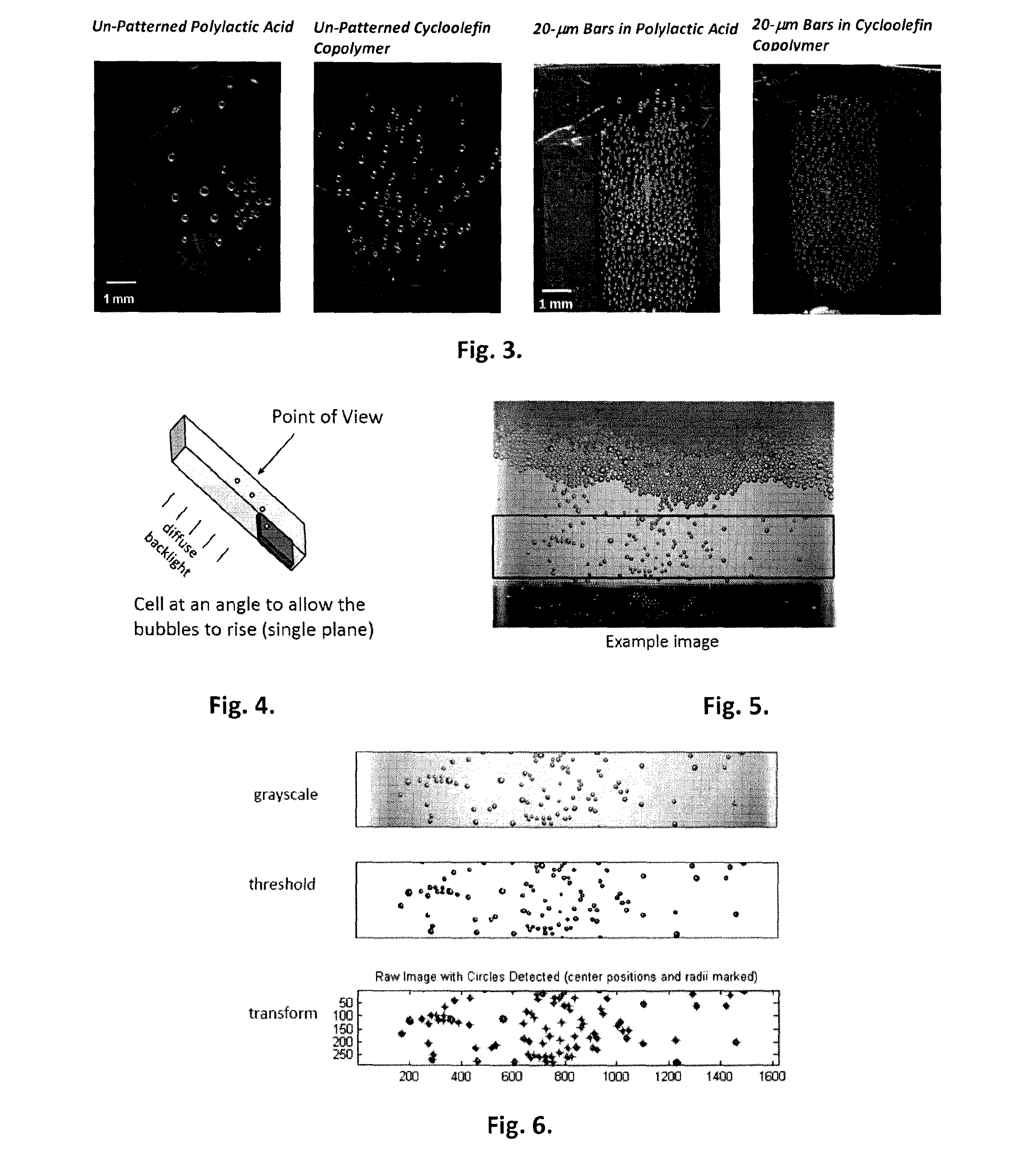Beverage Container
a beverage container and container technology, applied in the field of beverage containers, can solve the problems of slow canning speed compared to traditional canned beverages, requiring special capital equipment for widgets, and all require systems that are not easily integrated,
- Summary
- Abstract
- Description
- Claims
- Application Information
AI Technical Summary
Benefits of technology
Problems solved by technology
Method used
Image
Examples
Embodiment Construction
[0028]According to the invention, the best results are achieved with surfaces having a cavity diameter in the range of 6-100 nm (0.006-0.1 μm) and shallow cavity depth (see FIG. 1). Surfaces at the extreme ends of behaviour, either highly wetting or superhydrophobic were expected to provide the fastest bubble growth. A slight preference was expected towards superhydrophobic (see FIG. 2). Calculations suggest that the target nucleation rate for sufficient foam to form can be achieved with a nucleation site density inside the can of approximately 0.003%, with the assumption that the target bubble rate is 5.3×104 bubbles / mL·s; Inner surface area of can is 364 cm2 and volume of Beer=441 mL; each site is 100 nm diameter; bubble growth time is 4 s.
[0029]FIG. 1 shows a two-dimensional plot describing how the detachment diameter (in μm) for a bubble growing from a cavity depends on the cavity radius and the contact angle of the surface. To achieve 50 μm bubbles in the head of stout beers, t...
PUM
| Property | Measurement | Unit |
|---|---|---|
| size | aaaaa | aaaaa |
| size | aaaaa | aaaaa |
| size | aaaaa | aaaaa |
Abstract
Description
Claims
Application Information
 Login to View More
Login to View More - R&D
- Intellectual Property
- Life Sciences
- Materials
- Tech Scout
- Unparalleled Data Quality
- Higher Quality Content
- 60% Fewer Hallucinations
Browse by: Latest US Patents, China's latest patents, Technical Efficacy Thesaurus, Application Domain, Technology Topic, Popular Technical Reports.
© 2025 PatSnap. All rights reserved.Legal|Privacy policy|Modern Slavery Act Transparency Statement|Sitemap|About US| Contact US: help@patsnap.com



